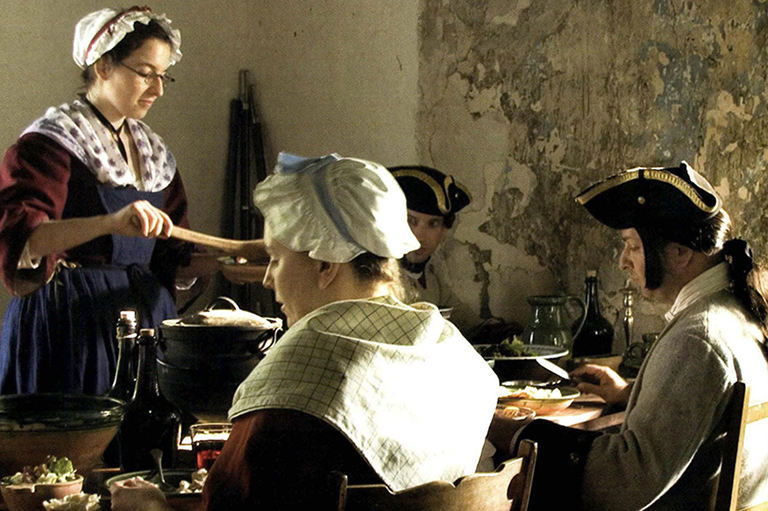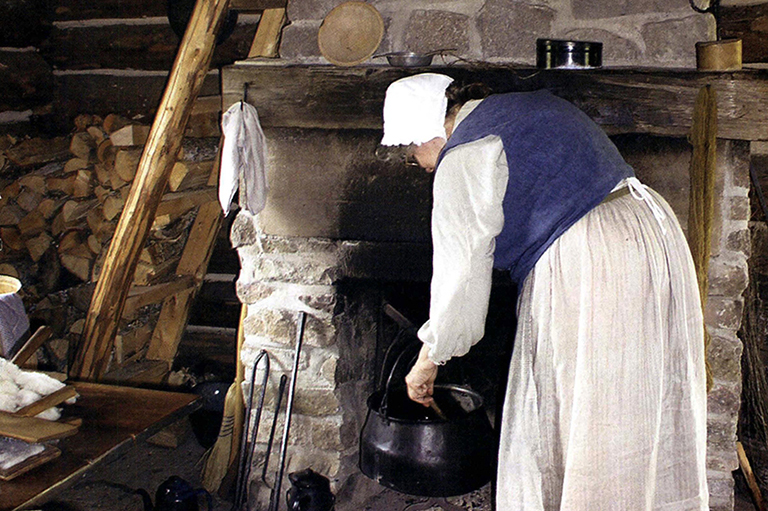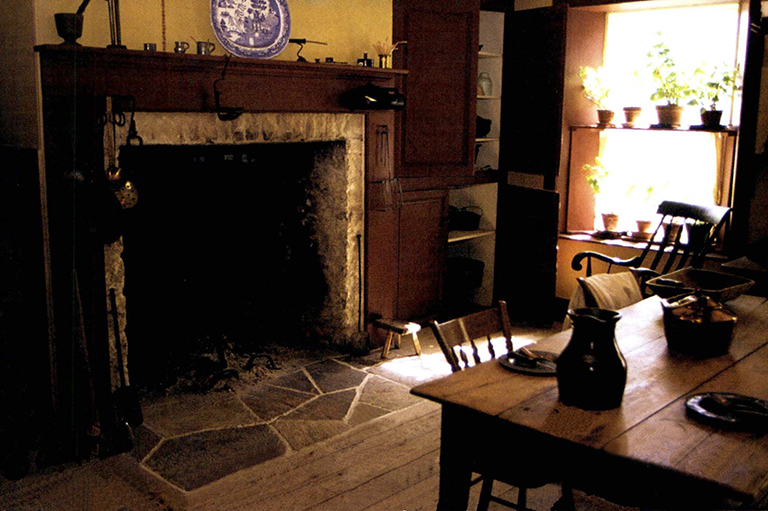Beef & Berries on the Prairies
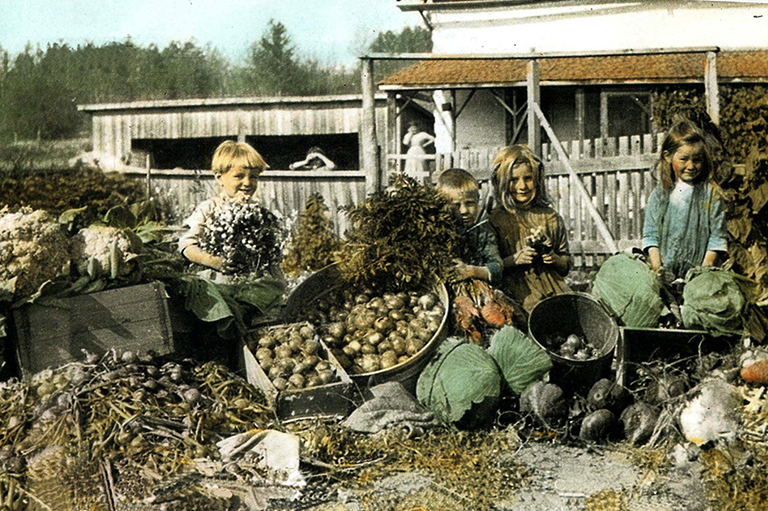
Moving westward in the late nineteenth and eady twentieth centuries, thousands of settlers from Eastern Canada and Eastern Europe looked for new land to farm. By the First World War, the Prairies were largely grain and ranchlands, providing wheat and beef to urban markets via the railroad. As a farmwoman, the fictional “Maude” is involved in the daily activities of her ranch, but spends much of her time in all aspects of food preparation for her family.
High River, Alberta April 28, 1928
Dear Mother,
It’s finally spring on the Prairies, and so soon it will be time to think about planting the garden and branding calves before sending them up into the high summer pastures to graze.
After another long winter, it will be grand to have fresh greens and berries, new potatoes, and crisp carrots for the pot. Our meals of late have been pulled from the dwindling pantry—the last of the bottled and salted meats and preserves, and the few root vegetables still intact, and not sprouting, in the cellar.
We had a good potato crop last fall, put up a fair bit of crabapple jelly and saskatoon berry jam, and we pickled beets and made jars of dills and chow chow in the fall with the cucumbers from the garden. So there are at least a few things left to make our basic meat and potatoes meals here on the ranch a wee bit interesting.
But it will be good to have a crop of fresh fruits and vegetables. April has been warm, and the rhubarb is already sprouting through the snow. We may be able to get down to the river soon to catch some rainbow trout and maybe even collect a bit of spicy cress, young dandelion greens, or wild onions for a salad. After so many months of mashed roots and rutabagas, those wild greens are always a treat.
It will also be nice to have dry roads and warm weather so that we can spend more time visiting with our neighbours and friends again. Our last big community event—save the holiday skating parties at Christmastime—was the annual fall supper in October at the community hall. As usual, the local ladies outdid themselves, arriving with an array of colourful aspic salads, and specialties like potato scones and raisin pies.
The pantry may be dwindling now, but in the fall it seems like the prairie bounty knows no bounds—we had platters of roasted turkey and smoke-cured ham, mashed potatoes and gravy, squash and carrots, creamy pumpkin pies and apple crisp. With neighbours in the district from Germany and other parts of Europe too, our communal feasts often include homemade sauerkraut, fat pork sausages, pierogi, and cabbage rolls—even flaky strudel and poppyseed rolls—and plenty of chokecherry wine.
The next big gathering will be at the spring branding party. After rounding up the cattle, we meet at the beautiful Gardiner homestead to cut and brand the bawling calves with each rancher’s unique mark, and then feast on the crispy calf fries (we call them “prairie oysters” for fun), baked beans, and oatmeal bread cooked on the campfire in a blackened Dutch oven. It always amazes me to see what these cowboy cooks can create from the simple staples hauled from cow camp to cow camp in the back of a chuckwagon. With a barrel of flour and a little lard, some apples or CPR strawberries (a.k.a. prunes), they even bake sweet turnovers (or fried pies, as the cowboys call them), puddings, and doughnuts.
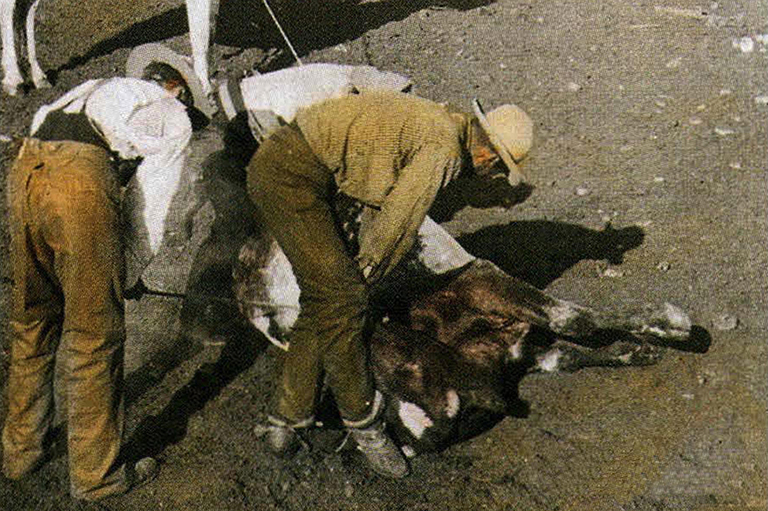
I will soon be planting vegetables in the plot behind the house. We have a large fence around the garden to keep the moose and deer out, but they always seem to find a way through my fortifications. If there is enough rain, we should have juicy strawberries from the patch in late June. Then it will be time to head into the coulees to pick wild berries for pies and jams.
You must try to arrange for a visit to Alberta sometime this summer, perhaps in July for the Calgary Stampede. Some of the cowboys from around here have entered the chuckwagon races that they started a couple of years back. It is really quite a sight to see—horses and riders barrelling around the track behind their wagons, then racing to set up a tent and light the camp stove, just like they did out here on the range.
You know, the Canadian Pacific Railway comes directly to Calgary from Toronto, and I understand the food on the train is quite wonderful—served on fine china and CPR silver. You and Father could book a sleeping compartment and travel in style.
As for the train food, I saw a sample menu posted at the station in town. While I am waiting for the first spring lamb with great anticipation here, on the train you can order navarin of lamb, lamb chops, or even exotic lamb curry with chutney. Of course they serve Alberta beef, too, grilled tenderloin steak with spring vegetables and Bearnaise sauce. The chefs collect ingredients as they cross the country, so you can even have fried soft-shell crabs with tartar sauce and fresh oysters on the half shell.
I do hope you can come out to see us soon. You will be surprised at how good life can be here in the West.
Love from us
Maude
With 7 uniquely curated newsletters to choose from, we have something for everyone.
Bellybustin’ firewater
They were called keg angels, whisky ranchers, and whoop-up cowboys. The notorious whisky peddlers of southern Alberta introduced what the Cree called iskotawapo, or firewater to Western Canada. Firewater was a cheap, diluted brandy or whisky often bartered for furs with First Nations people.
At Fort Whoop-Up, near the site of present day Lethbridge, Alberta, one cup of the perilous potion was traded for a dressed buffalo hide.
A stomach-turning recipe still exists in the Glenbow Archives, recorded by pioneer druggist John D. Higinbotham. (Don’t try this at home, folks.)
Whoop-Up Recipe
- Alcohol 1 qt.
- Black Strap Chewing Tobacco 1 lb.
- Jamaica Ginger 1 bottle
- Black Molasses 1 quart
- Water enough for the job
- Boil and stir until “ripe!”
—Christopher Webb
The Way We Ate
We hope you’ll help us continue to share fascinating stories about Canada’s past by making a donation to Canada’s History Society today.
We highlight our nation’s diverse past by telling stories that illuminate the people, places, and events that unite us as Canadians, and by making those stories accessible to everyone through our free online content.
We are a registered charity that depends on contributions from readers like you to share inspiring and informative stories with students and citizens of all ages — award-winning stories written by Canada’s top historians, authors, journalists, and history enthusiasts.
Any amount helps, or better yet, start a monthly donation today. Your support makes all the difference. Thank you!
Themes associated with this article
Advertisement
Save as much as 40% off the cover price! 4 issues per year as low as $29.95. Available in print and digital. Tariff-exempt!

